Monopoly Area Monday
Welcome to Grid Brief! Today, we’re looking at power generation in America’s traditional monopoly areas with relevant news items. Scroll to the end for great conversation starters about record-breaking power generation today and in coming years.
Monopoly Area Monday
Here’s a snapshot of generation nationwide:
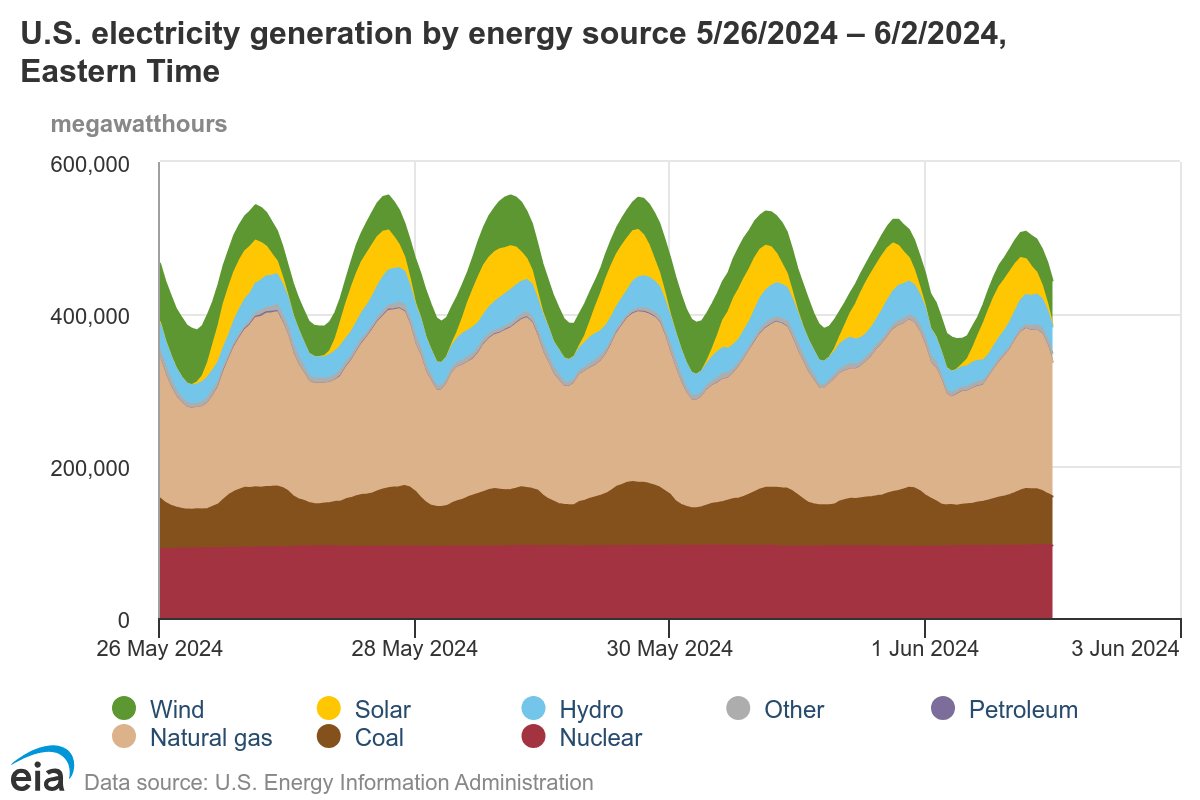
Natural gas continues to dominate, accounting for around 41% of total generation, which is higher compared to the previous years. This increase is likely driven by recent heatwaves across various states, leading to higher air conditioning usage. Wind and solar also contributed significantly, with wind making up about 10% and solar around 7% of the total generation.
And here’s a map to orient you as we move through the areas:

Carolinas

In the Carolinas region, electricity demand was primarily met by natural gas and nuclear power, providing consistent baseline generation. Duke’s recent announcement to expand it’s nuclear generation will help meet a substantial demand.
Tennessee (TVA)

The TVA region benefited from increased hydroelectric power due to recent rainfall, which elevated river levels and boosted generation capacity. Nuclear power remained a stable and significant contributor, while natural gas was used to meet additional demand.
Southeast
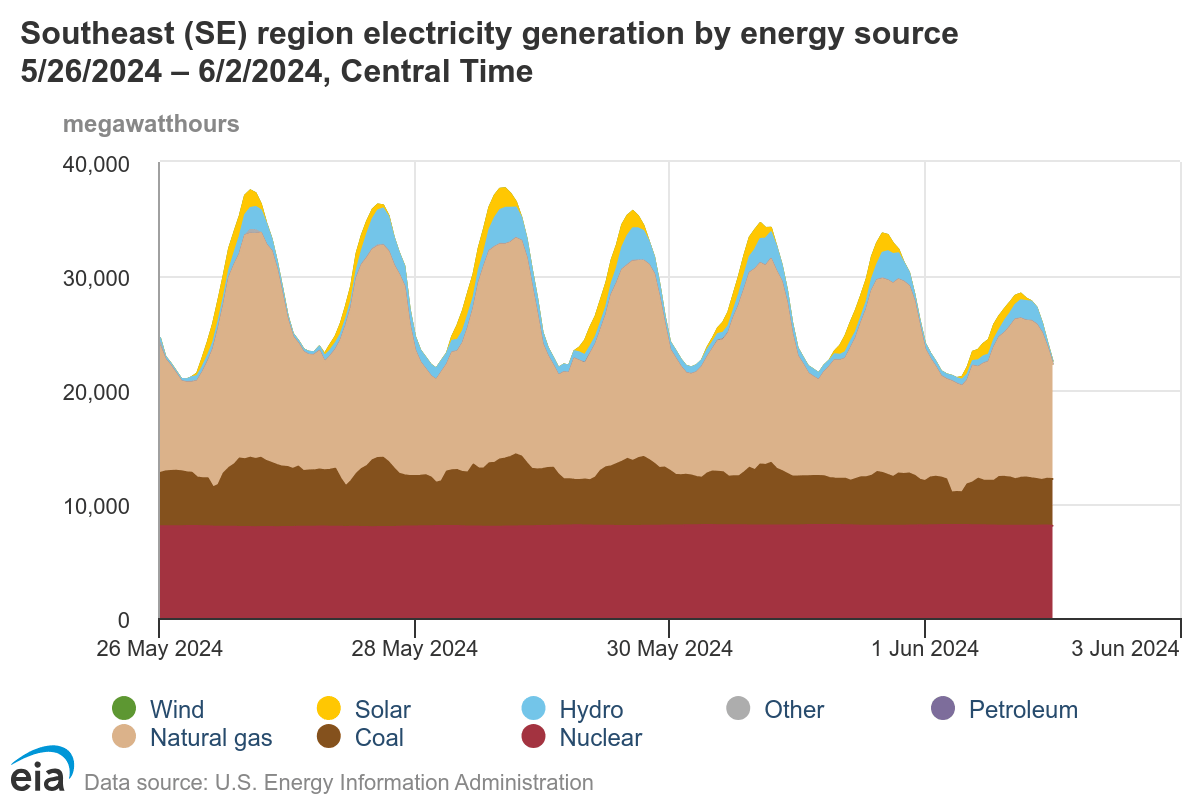
Recent thunderstorms in the region may have impacted solar output intermittently, but overall, fossil fuels remained the backbone of electricity generation.
Florida
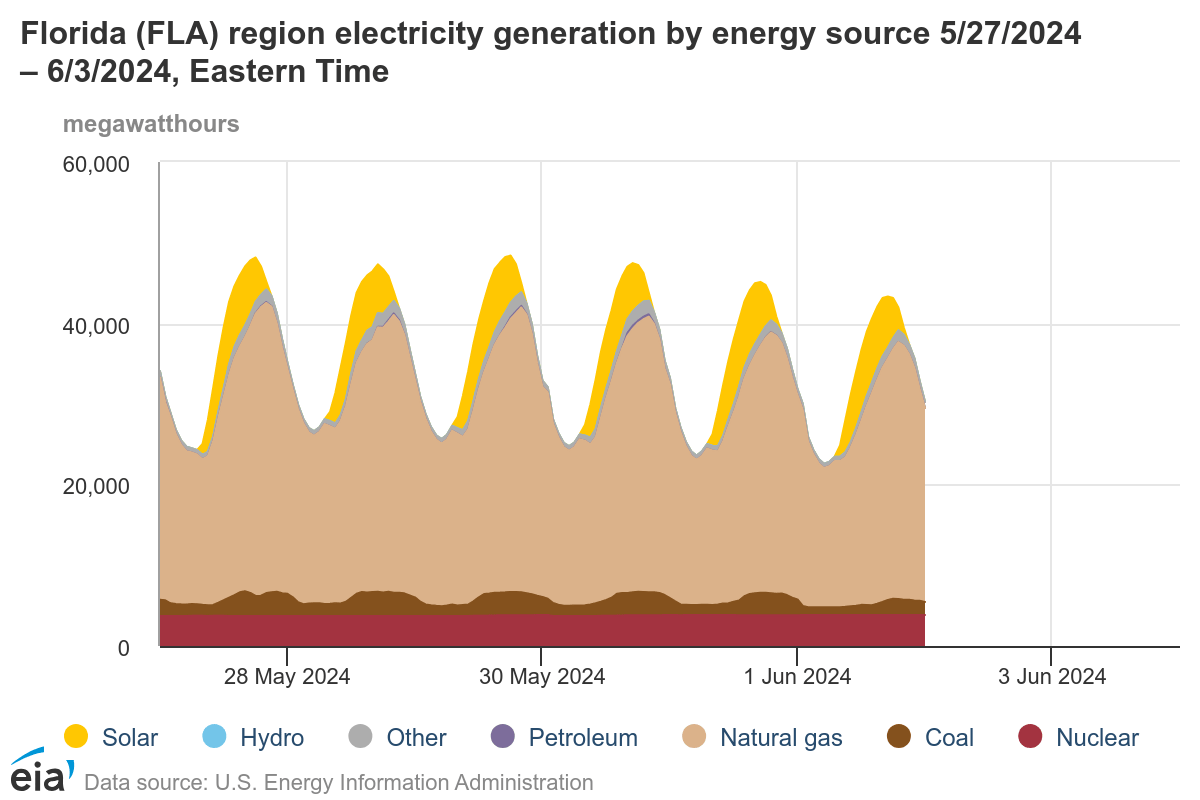
The consistency in natural gas generation underscores its critical role in meeting Florida's energy needs, particularly with rising temperatures driving higher air conditioning use.
Texas (ERCOT)
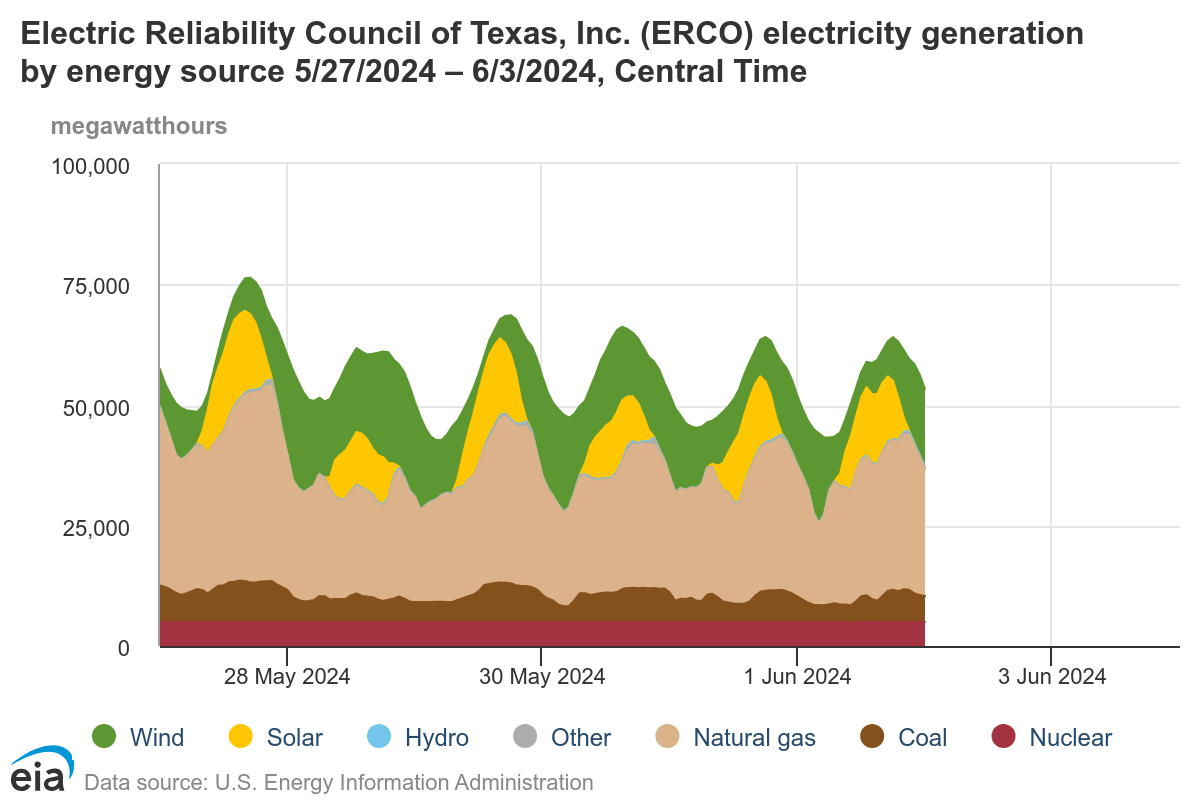
In Texas, we followed a record-breaking day for power consumption in May (on Monday the 20th) with yet another record-breaker on the Monday the 27th. Meanwhile, 25,000 Texans remain without power due to outages led by Deep East and Oncor. Had those residents been operating, the record would likely have been significantly higher.
Northwest
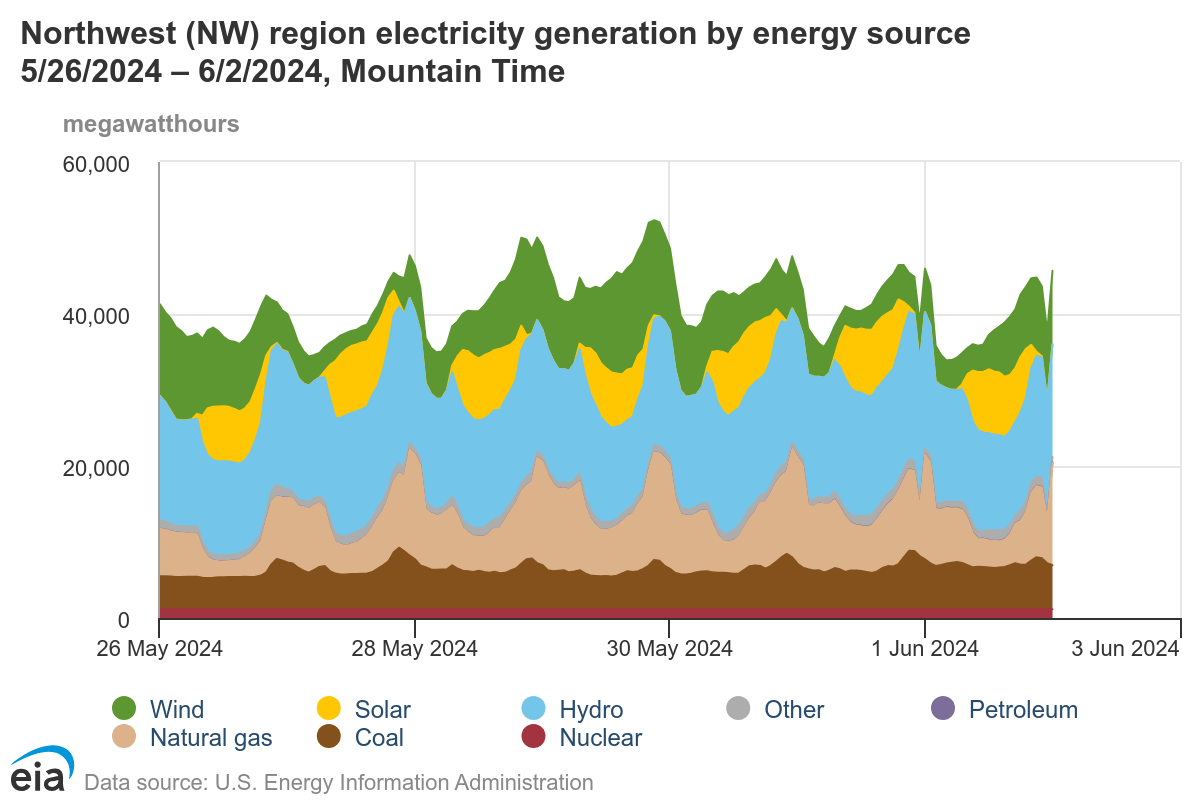
Spring runoff from in Montana and Colorado have picked up substantially this week with some Colorado snowcaps melting at a faster rate than recent history. The resulting deluge of water has some preparing for floods and leaves hydro power looking like a healthy chunk of the mix for the coming month.
Southwest
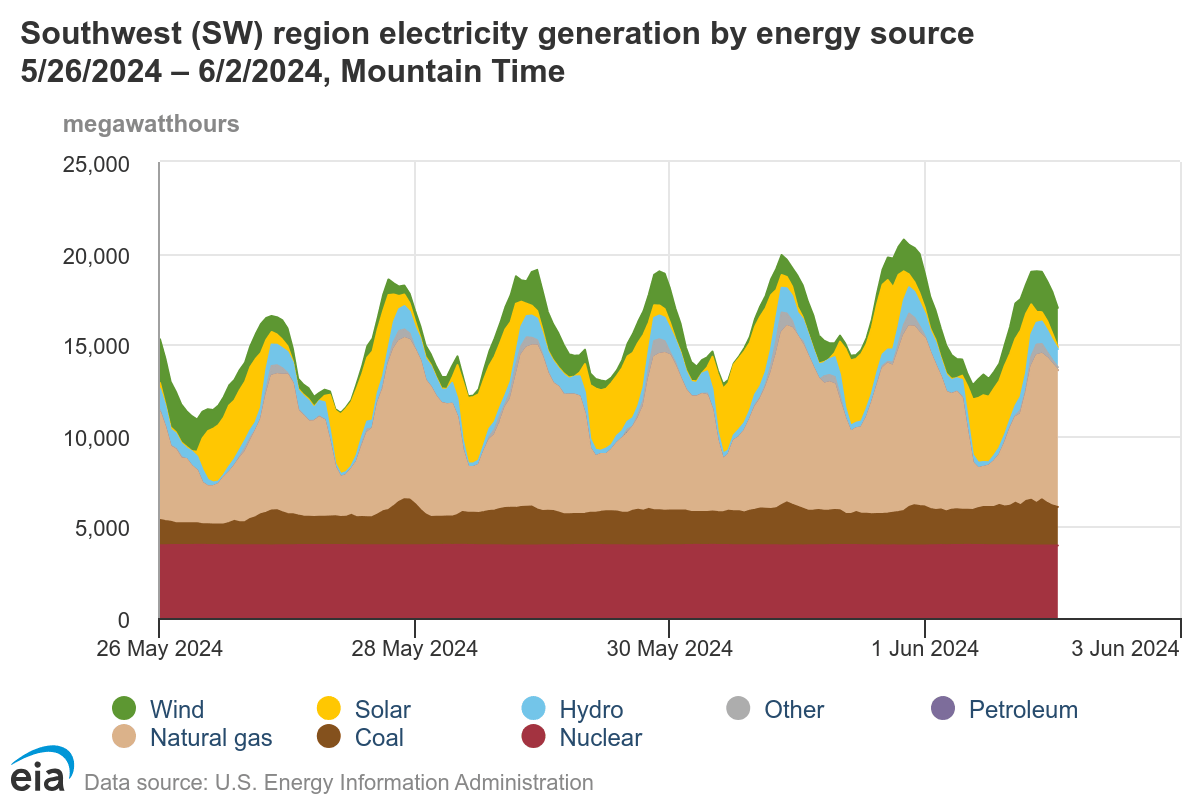
The Southwest region saw a steady rise in electricity generation from natural gas and solar power, driven by consistent sunny weather over the past week. Wind power generation showed notable peaks, correlating with a strong wind event mid-week. Coal and nuclear power provided a stable baseline, ensuring grid reliability amidst variable renewable outputs.
Conversation Starters
Electricity Prices and the 2024 Election Floridians are overwhelmingly concerned about the cost of energy, with 84% expressing worry over rising electricity prices, according to a recent poll commissioned by the Environmental Defense Fund. This concern is not isolated to Florida. Nationally, energy costs are a top priority for voters. A Brookings report found that 22% of voters identify inflation and high prices, including electricity, as their most important issue. Given these concerns, how do you think the rising cost of electricity will influence voter behavior and impact the outcomes of the 2024 election?
AI's Energy Appetite: 9% of US Electricity by 2030 As AI takes over more of our digital landscape, the power it needs is skyrocketing. EPRI’s latest study shows that data centers could suck up to 9% of U.S. electricity by 2030—more than double what they use today. AI queries demand about ten times more electricity than regular internet searches, and as more people jump on the AI bandwagon, this could stress our power grid. With massive data centers requiring energy equivalent to up to 800,000 homes, regional power supply could face serious challenges. What strategies should we adopt to manage this growing power demand while ensuring reliable and affordable energy?
Natural Gas Matching Last Year’s Records The U.S. EIA forecasts that natural gas consumption for electricity will reach a record high this summer, matching last year’s peak of 44.7 billion cubic feet per day. Despite a 3% expected increase in overall electricity generation, the rise of renewables is set to balance out the demand, preventing additional growth in natural gas generation. The U.S. has seen a significant shift toward more natural gas and renewables, with natural gas-fired power generation capacity growing 19% since 2014.
